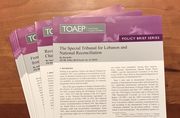Table of contents:
Element:
3.1. The perpetrator caused one or more persons to engage in an act of a sexual nature.
In Taylor, the Trial Chamber concurred with the Appeals Chamber in Kunarac et al. that:
"[t]he consent of the victim must be given voluntarily, as a result of the victim's free will, assessed in the context of the surrounding circumstances. This is necessarily a contextual assessment. However, in situations of armed conflict or detention, coercion is almost universal. Force or the threat of force provides clear evidence of non-consent, but force is not an element per se of rape and there are factors other than force which may render an act of sexual penetration non-consensual or non-voluntary on the part of the victim. 'Continuous resistance' by the victim, physical force or even threat of force by the perpetrator are not required to establish coercion. A person may be incapable of giving genuine consent if affected by natural, induced or age related incapacity."[1]
The Trial Chamber in Kunarac et al. held that the offence of rape:
"[...] is accompanied by force or threat of force to the victim or a third party [...] or a variety of other specified circumstances which made the victim particularly vulnerable or negated her ability to make an informed refusal."[2]
3.2.1. Evidence of use of force.
3.2.2. Evidence of threat of force.
3.2.4. Evidence of psychological oppression.
3.2.5. Evidence of abuse of power.
3.2.6. Evidence of a coercive environment.







